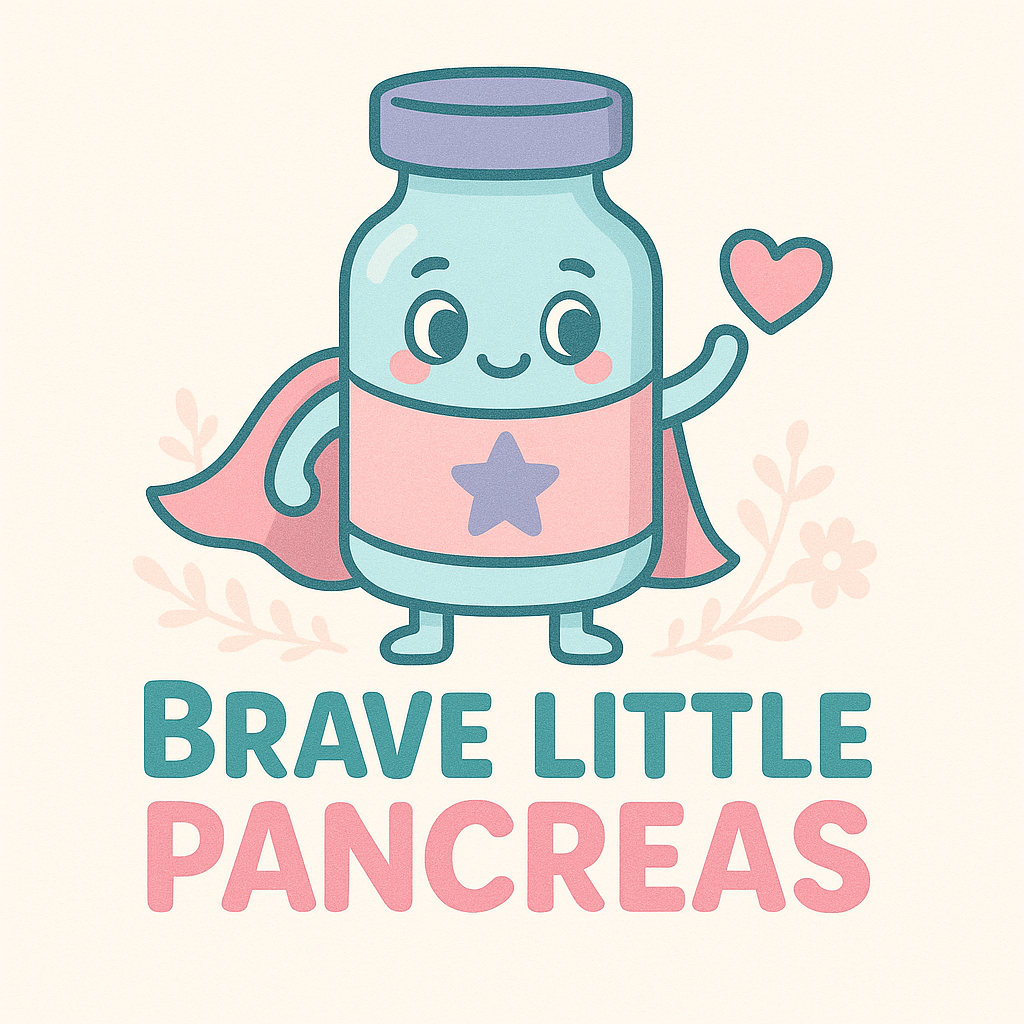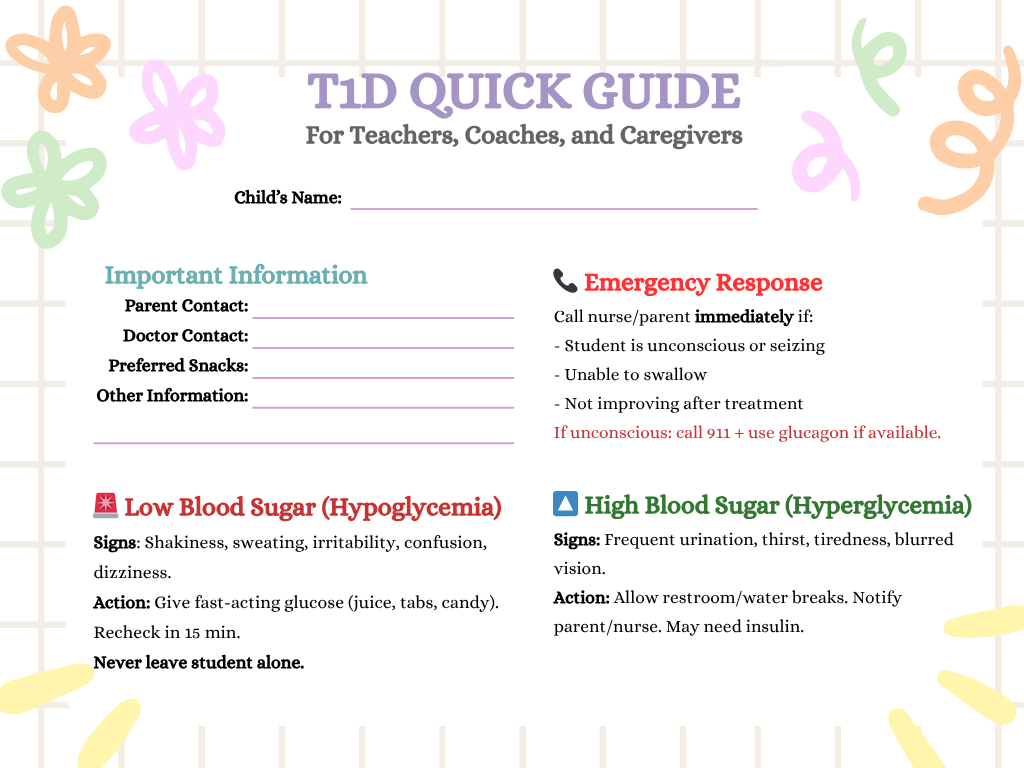IN THIS LESSON YOU’LL LEARN:
✔️ Why communication is key in keeping your child safe and supported
✔️ What information to share (and what to keep simple)
✔️ Tips for talking to teachers, babysitters, and coaches without overwhelm
✔️ Tools to make communication easier and less stressful
Why Communication Matters
No matter how strong your child’s care plan is, it only works if caregivers understand it. Clear, open communication builds trust, reduces misunderstandings, and makes sure your child gets the right help at the right time.
Remember: caregivers don’t need to know everything about Type 1 Diabetes — just the essentials that keep your child safe.
What Information to Share
When talking with teachers, babysitters, or coaches, focus on:
Daily routines: When to check blood sugar, when to give insulin, snack times.
Recognizing lows and highs: Simple signs and quick actions.
Emergency steps: What to do if your child is very low or unresponsive.
Contact info: Parent/guardian number, doctor’s office number.
✨ Keep it short and actionable — they’ll feel more confident when it’s clear.
Topics to Cover
Basic info: child’s name, age, diagnosis
Parent/guardian contact numbers
Doctor/clinic contact information
Daily schedule: blood sugar checks, snacks, insulin times
How to recognize low blood sugar
How to treat low blood sugar (step by step)
How to recognize high blood sugar
How to respond to high blood sugar (water, insulin, ketones)
Emergency steps: when to call parent or 911
Location of supplies: meter, strips, insulin, snacks, glucagon
Special situations: school parties, sports, field trips
Tips for Effective Communication
With Teachers
Schedule a short meeting at the start of the school year.
Provide a one-page summary (“Teacher’s Quick Guide”).
Let them know how to handle special situations like field trips or parties.
With Babysitters/Daycare
Walk through meals, checks, and treatment basics step by step.
Leave written instructions and emergency numbers in an easy-to-see spot.
Encourage them to text or call with questions — it’s better to ask than guess.
With Coaches or Activity Leaders
Explain how exercise affects blood sugar.
Make sure snacks and water are nearby during practices or games.
Share signs of hypoglycemia and how to treat it quickly.
Tools That Help
Quick Guides & Cards: The T1D Quick Guide for Caregivers is perfect for handing to teachers, coaches, and babysitters.
Checklists: Supply checklists reduce forgotten items.
Scripts: Practice how you’ll explain T1D in one or two sentences (“My child has Type 1 Diabetes. Here’s what to look for and what to do if they need help.”).
Quick Parent Tip
✨ Don’t be afraid to repeat yourself. Caregivers may need reminders until it becomes second nature. Every conversation is one more step toward keeping your child safe.
Next Lesson Preview: Monitoring Blood Sugar — understanding the numbers and how to respond with confidence.
-
Add a short summary or a list of helpful resources here.




